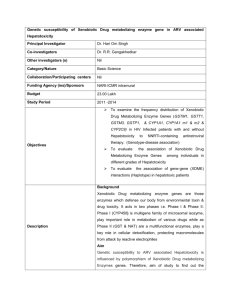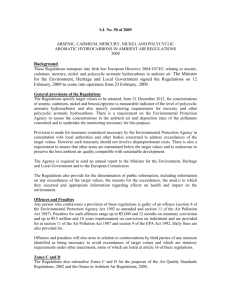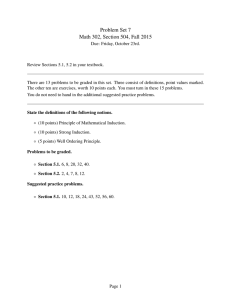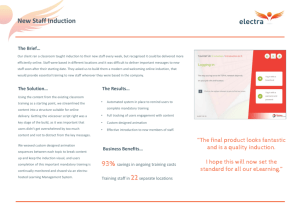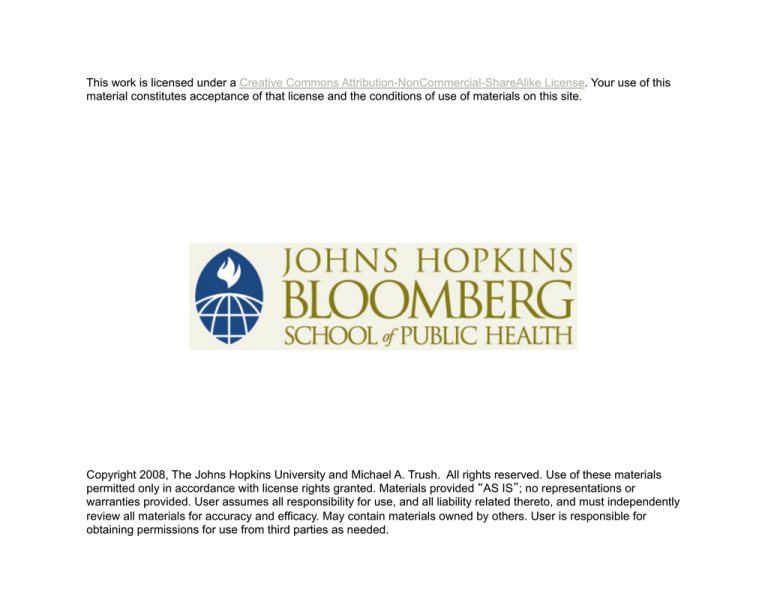
This work is licensed under a Creative Commons Attribution-NonCommercial-ShareAlike License. Your use of this
material constitutes acceptance of that license and the conditions of use of materials on this site.
Copyright 2008, The Johns Hopkins University and Michael A. Trush. All rights reserved. Use of these materials
permitted only in accordance with license rights granted. Materials provided “AS IS”; no representations or
warranties provided. User assumes all responsibility for use, and all liability related thereto, and must independently
review all materials for accuracy and efficacy. May contain materials owned by others. User is responsible for
obtaining permissions for use from third parties as needed.
Section D
Induction of
Biotransformation Enzymes
Induction of Xenobiotic
Metabolizing Systems
1. Many chemicals can induce the synthesis
of the enzymes involved in Phase I and II
xenobiotic metabolism and include
chemicals found in the environment, the
diet, and cigarette smoke
2. Inducers often exhibit specificity for the
enzymes which they induce
Continued 39
Induction of Xenobiotic
Metabolizing Systems
3. Depending on the inducer, fairly high
dose levels or repeated dosing may be
required; on the other hand, TCDD
(dioxin) is effective as an inducer at
1 microgram/kg in some species
Continued 40
Induction of Xenobiotic
Metabolizing Systems
4. Studies have demonstrated that a
cluster of genes referred to as the
Ah locus controls the induction of
xenobiotic enzyme activities by polycyclic
aromatic compounds and TCDD
Continued 41
Induction of Xenobiotic
Metabolizing Systems
5. Such toxic responses as cancer, chemicalinduced cataracts, aplastic anemia, and
fetal toxicity have been demonstrated to
be affected by this cluster of genes
6. Evidence exists for the Ah locus in man
42
Characteristics of the Hepatic Effects of
Phenobarbital and Polycyclic Aromatic Hydrocarbons
Characteristics
Enzyme components
Cytochrome P-450
Cytochrome P-448
NADPH-cytochrome
c reductase
Substrate specificity
N-Demethylation
Aliphatic hydroxylation
Polycyclic hydrocarbon
hydroxylation
Reductive dehalogenation
Phenobarbital
Polycyclic
Hydrocarbons
Increase
No effect
Increase
No effect
Increase
No effect
Increase
Increase
Small increase
No effect
No effect
Increase
Increase
No effect
43
Characteristics of the Hepatic Effects of
Phenobarbital and Polycyclic Aromatic Hydrocarbons
Characteristics
Onset of effects
Time of maximum effect
Persistence of induction
Liver enlargement
Protein synthesis
Phospholipid synthesis
Liver blood flow
Biliary flow
Glucuronidation
Glutathione conjugation
Epoxide hydrolase
Cytosolic receptor
Polycyclic
Hydrocarbons
8–12 hours
3–6 hours
3–5 days
24–48 hours
5–7 days
5–12 days
Marked
Slight
Large increase Small increase
Marked increase No effect
Increase
No effect
Increase
No effect
Increase
Small increase
Small increase Small increase
Increase
Small increase
None identified Identified
Phenobarbital
Continued 44
The Ah Receptor
w Ah receptor = Arylhydrocarbon receptor
w Examples = 3-methylcholanthrene
benzo[a]pyrene
w Also called TCDD receptor or dioxin
receptor
Continued 45
Schematic Outline of the Function of
the Ah Receptor as a Ligand-Activated
Transcription Factor
nucleus
cytoplasm
46

